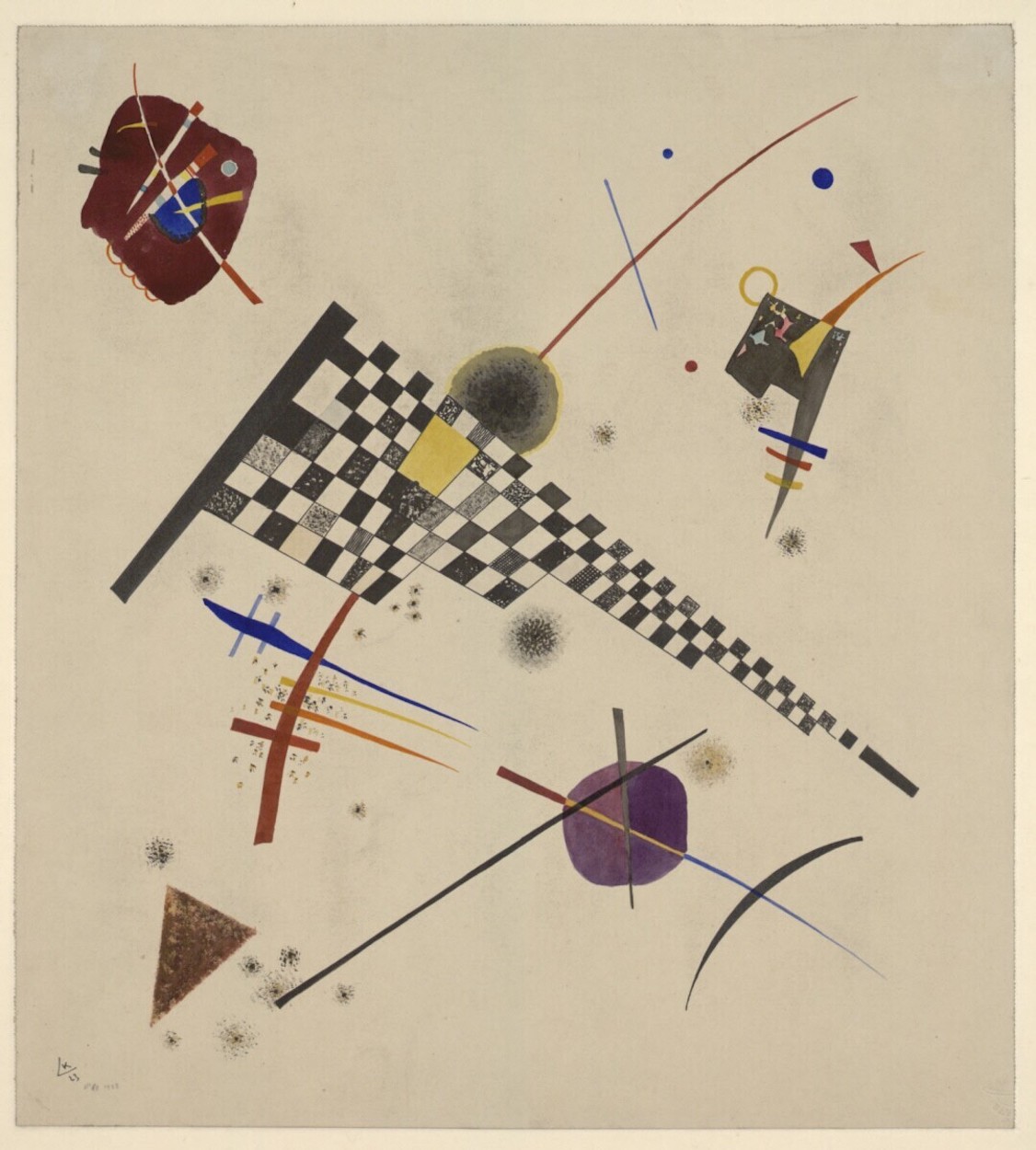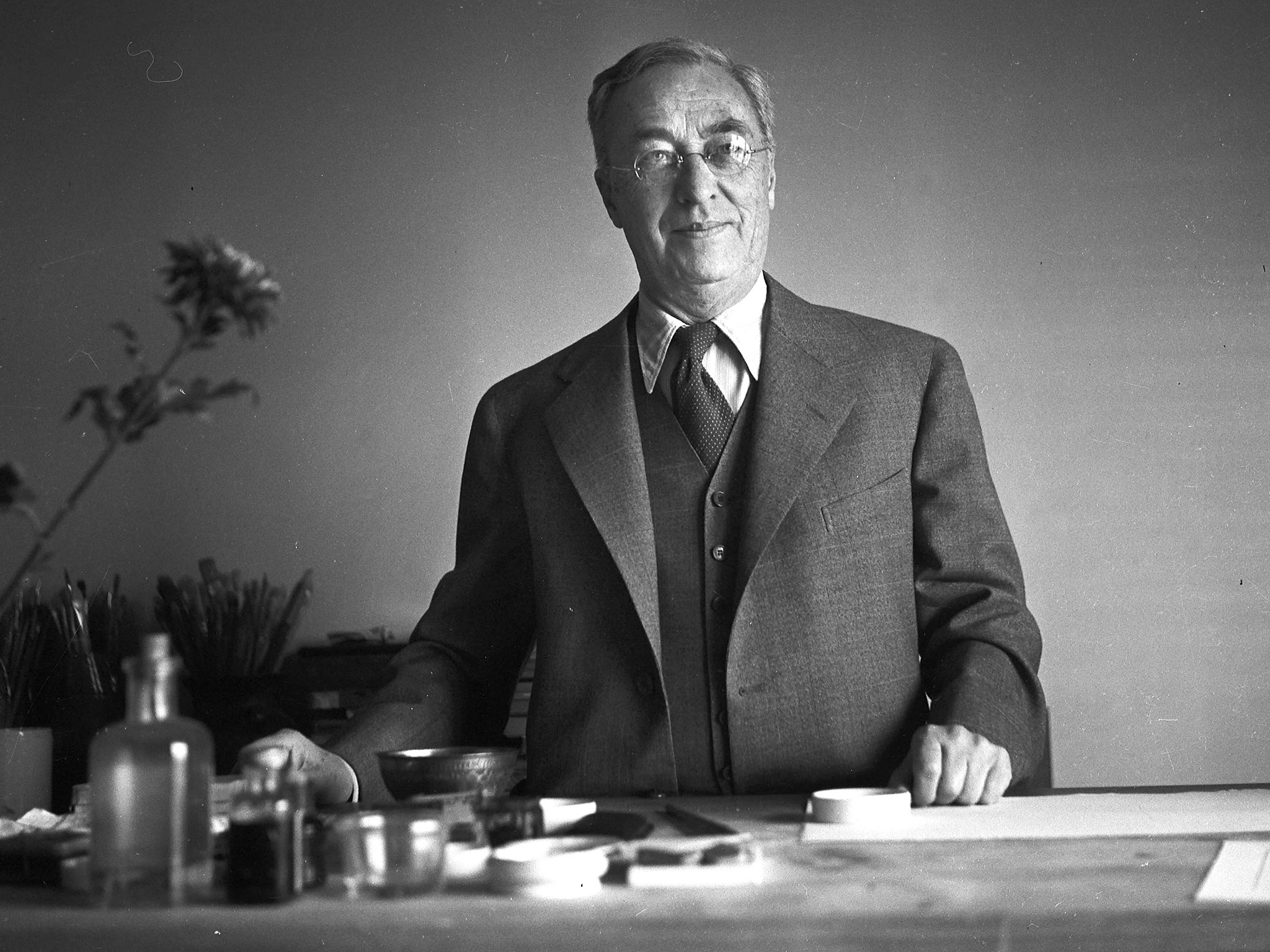The Grid is a watercolor painting by Wassily Kandinsky created in 1923. It’s a dynamic composition featuring floating colorful lines, circles, and triangles, with two primary and the most contrasting figures, according to the artist.
The 1920s were a productive period for Kandinsky. In 1922, he attended the International Congress of Progressive Artists. He taught the basics of design at Bauhaus and also gave painting classes and workshops exploring the relationship between art and psychology. Kandinsky was part of Die Blaue Vier (Blue Four), formed in 1923 with Paul Klee, Lyonel Feininger, and Alexej von Jawlensky, which lectured and exhibited in the United States in 1924.
Geometry became a central element in his teaching and painting: circles, half-circles, angles, straight lines, and curves recur in his work, inspired by Suprematism and Constructivism, gained in Russia and through Bauhaus. The artist assigned deeper meanings and associations to the colors, and he explored connections between other sensory experiences and colors.
We present today's work thanks to the Europeana, though it belongs to the collection of the Albertina Museum.
P.S. If you love Kandinsky, have you seen our high-quality print with one of his most famous Compositions?
P.P.S. If you're curious how Kandinsky created his masterpieces, watch him at work in rare footage from 1926!


 Wassily Kandinsky
Wassily Kandinsky